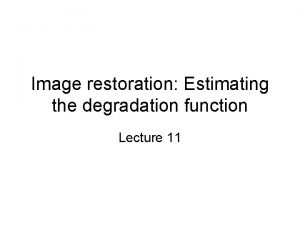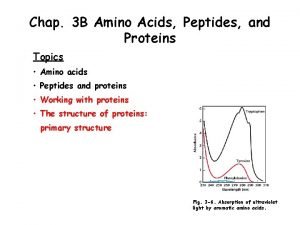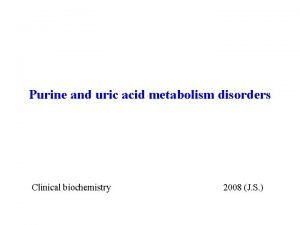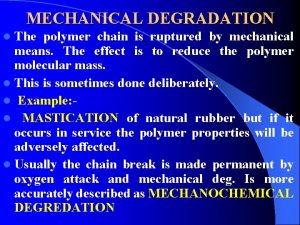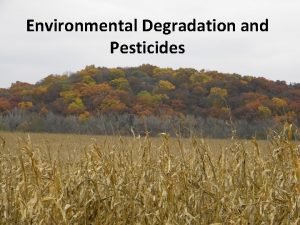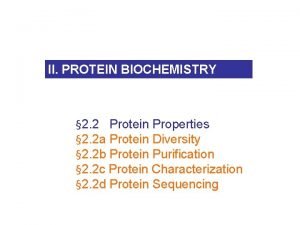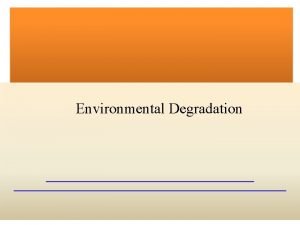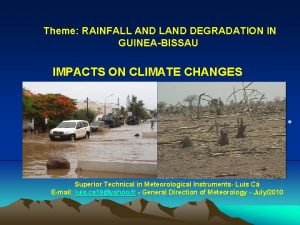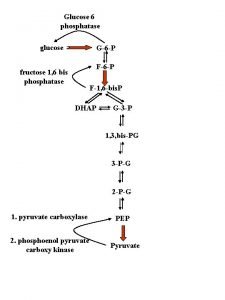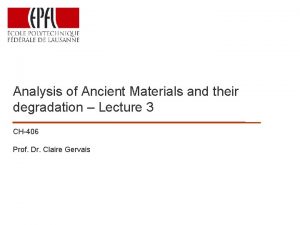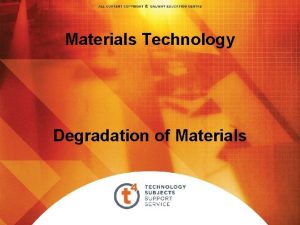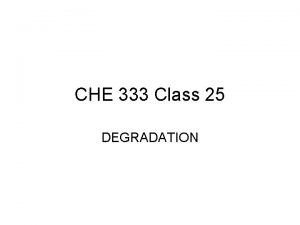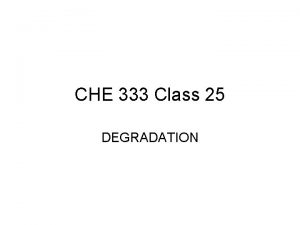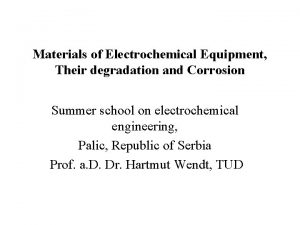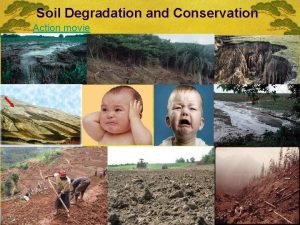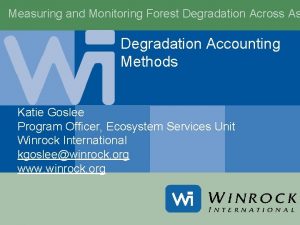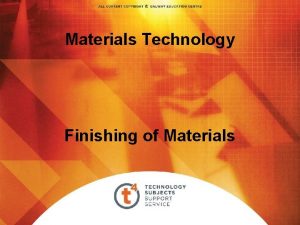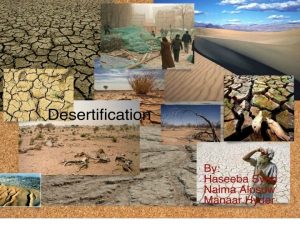Analysis of ancient materials and their degradation Lecture

































- Slides: 33

Analysis of ancient materials and their degradation – Lecture 1 CH-406 Prof. Dr. Claire Gervais

About my group and fundamental research in ancient materials CH-406 Prof. Dr. Claire Gervais

Ancient materials, art and sciences 3 • Gather and generate fundamental knowledge on ancient materials • Work on models highlight factors responsible for these processes Unknown history Precious, tiny Unknown manufacturing Controled history Plenty of material Controled manufacturing Case-study approach Model approach

Ancient materials, art and sciences • Gather and generate fundamental knowledge on ancient materials • Work on models • Techniques: Synchrotron and computational modeling Access hardly reachable properties of ancient materials 4

Ancient materials, art and sciences • Gather and generate fundamental knowledge on ancient materials • Work on models • Techniques: Synchrotron and computational modeling • International and national collaborations Target major challenges and get “best of” knowledge 5

Ancient materials, art and sciences 6 Broaden your definition of materials sciences/chemistry, “out of the box” thinking Propose an analytical framework to optimize information obtained from a micro-sample Introduction to imaging and spectroscopic synchrotron techniques (X-ray absorption spectroscopy, absorption tomography) Material Describe a variety of ancient materials and research in the field (paintings, ceramics, photographs, wall painting, etc) (appropriate techniques, measurement scale, heterogeneity, radiation damage)

About this course CH-406 Prof. Dr. Claire Gervais

Content 1. Introduction to Materials – – – Materials: definitions, multidisciplinarity, challenges The triangle Structure-Property-Function Materials research: Why, What, How, Where? 2. Introduction to ancient materials – – – Diversity of ancient materials: paintings, archaological objects, fossils, ivory, ceramics. What is ancient? The concept of materials historicity and impact on their scientific study Typical reasearch topics in ancient materials 3. Analyzing ancient materials: key concepts – – Heterogeneity in materials: a fuzzy concept with clear consequences. Too big or not too big? The art of adapting measurement scale to property scale. Sample preparation: bulk, cross-sections, thin-sections, porous materials. Example: Embedding techniques for thin sections of brittle paint samples. 8

Content 4. Synchrotron techniques for ancient materials – – – Synchrotron light: generation and specificities A specific synchrotron technique: X-ray absorption spectroscopy Example: Chrome yellow pigments in Van Gogh’s sunflowers 5. X-ray tomography techniques: Going to 3 D and 4 D imaging – – Materials through the X-ray beam: attenuation coefficients Acquiring a 3 D image: Acquisition and reconstruction (principles) Basics of image processing: filtering, segmentation, labelization Example: Virtual unfolding of ancient manuscripts 6. Physico-chemistry of materials degradation – – Reproducing and accelerating natural aging: limits of validity. In-situ analysis of degradation processes. Radiation damage: how to evaluate it and minimize it. Example: Radiation damage of Prussian blue paper artworks 9

Content (cont’d) 10 7. Case-studies of ancient materials and their degradation – Cobalt blue degradation in oil paintings. Application of FTIR and XAS imaging to understand potassium leaching leading to pigment discoloration. – Identification of archaeological ivory and its degradation. Application of tomography techniques to analyze porous materials and distinguish between ivory, bone and enamel non-invasively. – Nanoinvestigation of 19 th century daguerreotype photographs. New developments in nano X-ray fluorescence to understand the impact of Au gilding on the mechanical stability of the photograph. – Initial corrosion processes in reinforced concrete monuments. In-situ XAS and XRF imaging to decipher transient chemical species in early corrosion process. – Fossilization and diagenesis processes: Insights from rare earth elements. XAS and UV-vis luminescence techniques to discriminate tissues at microscale in fossils. – Technology of ancient ceramics.

Exercises For each case-study: – – Read publication beforehand Short summary “W 3 H” to discuss in classroom Discovery of a material Emphasis on degradation, technique or concept 11

Exam • Oral exam with: – Presentation of a selected publication on ancient materials – 1 -2 questions on lectures 12

Materials: a short introduction CH-406 Prof. Dr. Claire Gervais

What is a material? 14

What is a material? 15 Latin substantia, which means ’something that stands under or grounds things’ [. . . ] The substances in a given philosophical system are those things which, according to that system, are the foundational or fundamental entities of reality. ” [Standford University, Philosophy department] And for natural scientists…?

Why studying materials? • To study structure–properties relationships • To design new properties • To design new functions or improve performance of materials • To understand their formation/origin • To understand Earth’s history and origin of life • To understand Human’s history and art • To mitigate diseases, etc. 16

Why studying materials? • To study structure–properties relationships • To design new properties • To design new functions or improve performance of materials • To understand their formation/origin • To understand Earth’s history and origin of life • To understand Human’s history and art • To mitigate diseases, etc. 17

What are materials for scientists? 18 1. Basic definition • A material is defined by a set of individual components or phases, with specific physical properties and functions. • Materials are studied by chemists, physicists, geologists, engineers, archaeologists, conservation scientists. . . • Materials science is an interdisciplinary subject, spanning the physics and chemistry of matter, engineering applications and industrial manufacturing processes. [University of Oxford]

What are materials for scientists? 19 2. Subjective definitions • Multiple names for materials that emphasize one particular aspect: – – – –. . . Synthetic materials Natural materials Biomaterials Geomaterials Ancient materials Nanomaterials Raw materials Processed materials • Materials science is an applied science concerned with the relationship between the structure and properties of materials. [American Chemical Society]

What are materials for scientists? 20 3. Evolving definitions • Current paradigm shift to integrate interactions and interfaces between individual components that give rise to specific properties.

What are materials for scientists? 21 4. My personal definition • A material is defined by a ground set of components featuring specific properties representative of what the material means or has been designed for. Origin Properties Material Structure Function

What are materials for scientists? 22 Materiality Material sciences Function/ Properties Cut your steak Induce shear in a restaurant deformation Shape, type of Metal wood, microstructure decorations Material Eating tool Knife’s origin Cutting tool Manufactured iron

Materials characterization : key concepts 23 • Because of its versatile definition, characterizing materials requires to answer properly the following questions: – What? Precisely define which function, property, structure, interface, etc. is studied – Where? Evaluate its scale and deal with spatial, chemical, topological heterogeneities – These are prerequisites to choose appropriate characterization techniques and measurement conditions (How? ). – The Why should not be overlooked (ethics and subjectivity).

Materials characterization : What and Where? 24 What? Battery performance Electrode microstructure • Structure of active materials? • Ratio components? • Free electrolyte surface? • Interface electrolyte-additive?

Materials characterization : What and Where? 25 Where? Structures and properties of materials span over various length scales: from local atomic order to long-range order on the meso- and macroscopic scales. Materials science deals with these various scales.

Materials characterization : What and Where? 26 Where?

Materials characterization : What and Where? 27 Where?

Materials characterization : How? 28 How? X-ray absorption spectroscopy X-ray diffraction techniques… Battery performance Electrode microstructure • Structure of active materials? • Ratio components? • Free electrolyte surface? • Interface electrolyte-additive?

Materials characterization : What and Where? • Characterizing materials implies to keep in mind: – The scale at which the property is defined – The scale at which the measurement is performed – The scale for which the measurement is significant 29

Materials characterization : What and Where? Representativity of the measurement? 30

Materials characterization : What and Where? Representativity of the measurement = Statistics! 31

Materials characterization : What and Where? The art of materials characterization lies in choosing technique and measurement scale to the property of interest while ensuring enough statistics. 32

Take-home lesson 33 • Materials are often designed/defined by the interest we have in them: multifunctional, synthetic, biogenic, composite, ancient, natural, raw. . . • Characterizing materials implicitly means characterizing a particular set of functions / properties / component structures, along with the relationships between these components (interface, distribution). • Keep in mind the W 3 H! • Heterogeneity is a key concept in materials characterization because it conditions the scale at which obtaining a correct measurement. • Heterogeneity requires adequate statistical processing. • A correct characterization requires also to adapt the length scale of the measurement to that of the feature of interest.
 01:640:244 lecture notes - lecture 15: plat, idah, farad
01:640:244 lecture notes - lecture 15: plat, idah, farad Estimating the degradation function
Estimating the degradation function Edman degradation steps
Edman degradation steps Prdp biochemistry
Prdp biochemistry Mechanical degradation
Mechanical degradation Degradation of ketone bodies
Degradation of ketone bodies How environmental degradation occurs
How environmental degradation occurs Noise
Noise Light induced degradation
Light induced degradation Edman degradation
Edman degradation Salting out proteins
Salting out proteins Conclusion of environmental degradation
Conclusion of environmental degradation How environmental degradation occurs
How environmental degradation occurs Land degradation definition
Land degradation definition Starch degradation
Starch degradation Jurawatt
Jurawatt Abnormal degradation of disaccharides
Abnormal degradation of disaccharides Edman degradation
Edman degradation Tag degradation
Tag degradation Glucose 6 phosphatase
Glucose 6 phosphatase Linear position invariant degradation
Linear position invariant degradation Useful materials in the house
Useful materials in the house Cant stop the feeling trolls go noodle
Cant stop the feeling trolls go noodle Man made map
Man made map Differentiate adopting materials and adapting materials
Differentiate adopting materials and adapting materials Means of communication from ancient to modern
Means of communication from ancient to modern Ancient india vs ancient china
Ancient india vs ancient china 4 classification of hand tools
4 classification of hand tools Materials and their working properties
Materials and their working properties Application of solid insulating material
Application of solid insulating material Direct materials budget with multiple materials
Direct materials budget with multiple materials Tainos
Tainos In fair verona where we lay our scene modern translation
In fair verona where we lay our scene modern translation Exploratory data analysis lecture notes
Exploratory data analysis lecture notes

